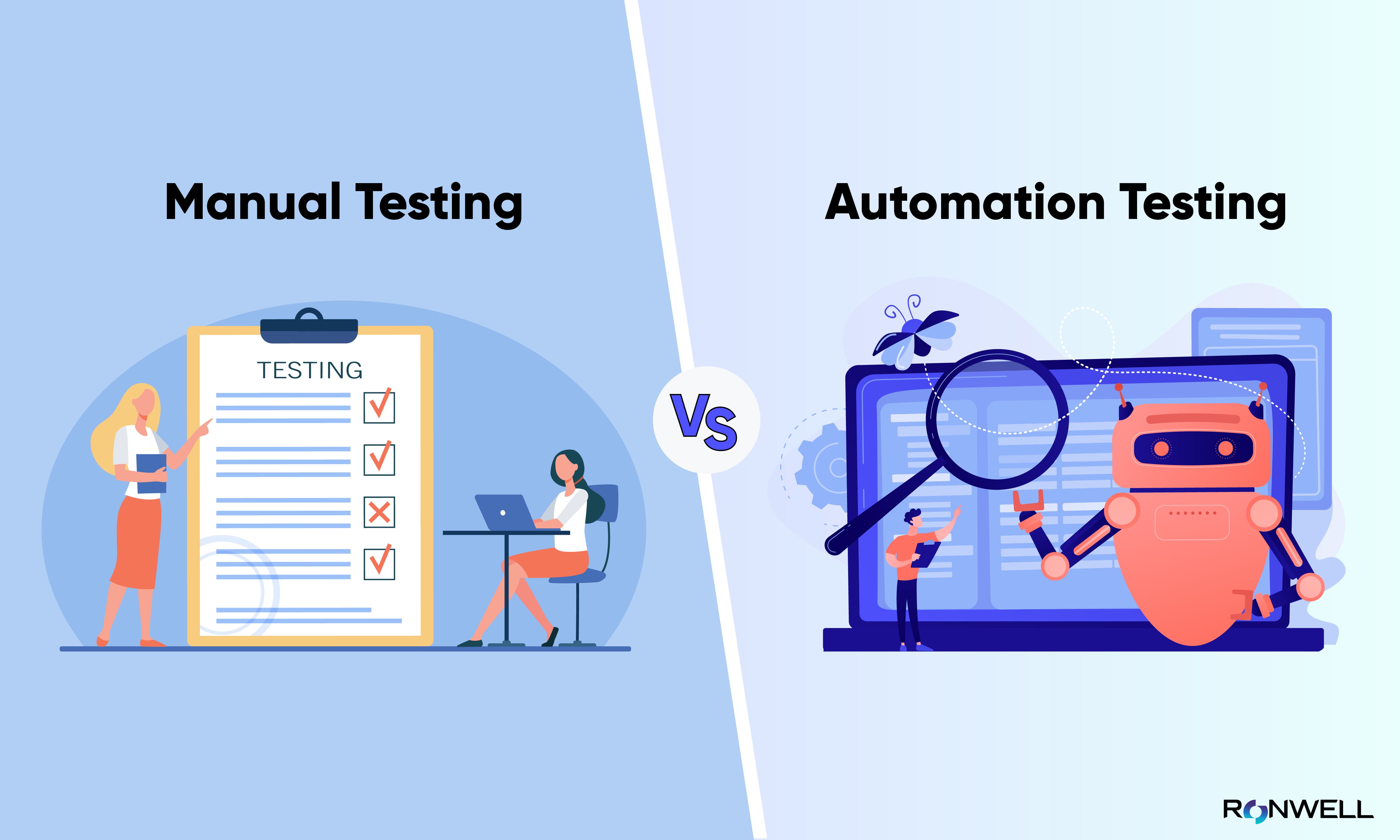The Value of Automation Testing in Agile Development Settings
The Value of Automation Testing in Agile Development Settings
Blog Article
From Handbook to Automated Testing: A Comprehensive Overview to Transitioning Smoothly and Properly
In the world of software program testing, the change from guidebook to automated procedures has actually become a progressively essential shift for companies seeking to boost effectiveness and accuracy in their screening practices. The journey from guidebook to automated testing is not without its difficulties, yet when approached strategically and with a clear plan in mind, the advantages can be significant.
Benefits of Automated Evaluating
Automated screening provides various advantages, enhancing effectiveness and precision in software growth processes. One primary advantage is the substantial decrease in testing time. Automated tests can be run concurrently on numerous gadgets and operating systems, substantially accelerating the testing phase compared to hands-on testing. This raised effectiveness permits faster comments on the top quality of the software application, making it possible for programmers to recognize and deal with problems quickly.
Moreover, automated screening guarantees a higher level of precision in identifying problems. Uniformity in testing is likewise boosted, as automated tests carry out the very same steps exactly each time they are run.
Selecting the Right Devices

To start with, analyze your demands and objectives. Comprehend the extent of your project, the technologies involved, and the capability of your group. This evaluation will certainly aid you figure out the capabilities and attributes you require in your screening tools.
Secondly, consider the compatibility of the tools with your existing systems and procedures. Seamless combination with your current software application advancement lifecycle is necessary to make certain a smooth transition to automation.
Additionally, review the scalability and versatility of the tools. As your screening requires evolve, the devices should be able to adjust and accommodate changes efficiently.
Lastly, consider the assistance and community around the tools. Durable support and an active customer area can give beneficial sources and support when implementing automated testing. By very carefully thinking about these elements, you can select the right tools that align with your demands and established the phase for an effective transition to automated testing.
Creating Reliable Test Scripts

When crafting test manuscripts, it is crucial to take into consideration the details requirements of the software program being checked and ensure that the manuscripts address all essential capabilities. Clear and descriptive naming conventions for examination scripts and examination instances can boost readability and maintainability. Furthermore, including mistake handling mechanisms within the test manuscripts can aid in recognizing and dealing with concerns immediately.
Furthermore, organizing test manuscripts right into modular parts can improve reusability and scalability, minimizing redundancy and enhancing effectiveness in test manuscript upkeep. original site Regular testimonials and updates to examine visit here scripts are critical to maintain pace with progressing software program needs and performances. By complying with these principles, testers can create efficient and robust test scripts that add significantly to the success of automated testing procedures.
Integrating Automation Into Workflows
Efficient combination of automation tools right into existing workflows enhances and simplifies processes productivity within software program development cycles. When including automation into operations, it is crucial to determine repetitive jobs that can be automated to save time and lower human error. By effortlessly incorporating automated testing tools like Selenium or Appium right into the software growth lifecycle, teams can achieve faster responses on code modifications, causing quicker insect discovery and resolution. This integration enables constant testing throughout the growth procedure, making sure that any concerns are identified beforehand, leading to higher software high quality. Furthermore, automation can be used to activate examinations immediately after each code commit, providing immediate recognition and maximizing testers to concentrate on even more facility situations. Correct combination of automation devices requires partnership between growth, testing, and procedures teams to develop a unified process that enhances efficiency and efficiency in providing high-quality software application items.
Making Sure a Smooth Shift
Efficiently transitioning to automated screening involves meticulous preparation and mindful execution to minimize interruptions and optimize efficiency in the software growth procedure - automation testing. To make sure a smooth change, it is vital to begin by conducting an extensive evaluation of the existing screening processes and identifying areas where automation can bring one of the most substantial advantages. Involving with all stakeholders beforehand at the same time, including designers, testers, and project click to find out more supervisors, is crucial for garnering assistance and buy-in for the automation initiative
Communication is essential during this change phase. Clear communication of the goals, benefits, and assumptions of automated testing assists to manage any kind of resistance or problems that may emerge. In addition, supplying adequate training and resources for team participants to upskill in automation devices and techniques is vital for guaranteeing an effective shift.

Final Thought
To conclude, transitioning from guidebook to automated testing offers numerous advantages, including increased performance and integrity. By choosing the proper devices, composing effective test manuscripts, and incorporating automation effortlessly right into process, companies can make certain a successful and smooth shift. It is important to accept automation as a valuable asset in software program testing processes to boost general top quality and efficiency.
In the world of software program screening, the shift from handbook to automated procedures has actually become a significantly important shift for companies seeking to improve performance and precision in their testing methods. Automated examinations can be run concurrently on numerous tools and operating systems, substantially speeding up the screening phase compared to hands-on testing. Consistency in screening is likewise boosted, as automated tests implement the very same actions exactly each time they are run.To ensure the effective implementation of picked testing tools, the development of reliable examination manuscripts plays an essential duty in verifying the performance and efficiency of automated procedures - automation testing. By complying with these concepts, testers can develop robust and reliable examination scripts that contribute dramatically to the success of automated screening processes
Report this page